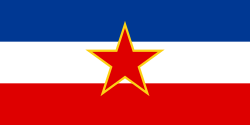| Total population | |
|---|---|
| 210,395 (2021) [1] | |
| Languages | |
| American English, Serbo-Croatian, Macedonian, Slovene Albanian (to a lesser extent) | |
| Religion | |
| Christianity (majority), Islam (minority) | |
| Related ethnic groups | |
| Yugoslav Canadians, European Americans |
| Part of a series on |
| Yugoslavs |
|---|
 |
| By region |
| Culture |
| History |
| Languages |
| People |
|
| Ethnicities |
Yugoslav Americans are Americans of full or partial Yugoslav ancestry. In the 2021 Community Surveys, there were 210,395 people who indicated Yugoslav or Yugoslav American as their ethnic origin; [1] a steep and steady decrease from previous censuses (233,325 in 2019; [2] 276,360 in 2016 [3] ) and nearly a 36% decrease from the 2000 Census when there were over 328,000. [4]
Contents
The total number of Americans whose origins lie in former Yugoslavia is unknown due to conflicting definitions and identifications; in descending order these were as per 2021 American Community Survey:
| Ethnic group | Number [1] |
|---|---|
| | 398,101 |
| | 210,395 |
| | 193,844 |
| | 162,172 |
| | 125,793 [5] |
| | 66,070 [1] |
| | Unknown |
| | Unknown |